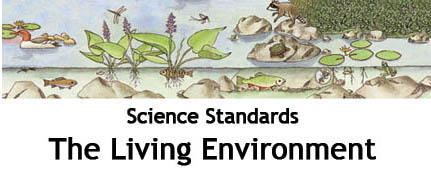

Students will understand and apply scientific concepts, principles, and theories pertaining to the physical setting and living environment and recognize the historical development of ideas in science.
Organisms maintain a dynamic equilibrium that sustains life.
“Students need many opportunities to observe a variety of organisms for the patterns of similarities and differences of the life functions used to sustain life. All organisms carry out basic life functions in order to sustain life. These life functions include growing, taking in nutrients, breathing, reproducing, and eliminating waste. Students need many opportunities to observe and compare these similarities and differences in a variety of organisms. Specimens that could provide these opportunities may include guppies, mealworms, and gerbils, as well as fish, insects, mammals, birds, amphibians, reptiles, plants, and fungi.” From the Elementary Science Core Curriculum Guidelines
Describe some survival behaviors of common living specimens.
5.2b Animals respond to change in their environment, (e.g., perspiration, heart rate, breathing rate, eye blinking, shivering, and salivating).
5.2c Senses can provide essential information (regarding danger, food, mates, etc.) to animals about their environment.
When you research information you must cite the reference. Citing for websites is different from citing from books, magazines and periodicals. The style of citing shown here is from the MLA Style Citations (Modern Language Association).
When citing a WEBSITE the general format is as follows.
Author Last Name, First Name(s). "Title: Subtitle of Part of Web Page, if appropriate." Title: Subtitle: Section of Page if appropriate. Sponsoring/Publishing Agency, If Given. Additional significant descriptive information. Date of Electronic Publication or other Date, such as Last Updated. Day Month Year of access < URL >.
Amsel, Sheri. " Living Environment: Animal Adaptations" Exploring Nature Educational Resource ©2005-2024. December 13, 2024
< http://exploringnature.org/db/view/-Living-Environment-Animal-Adaptations >

